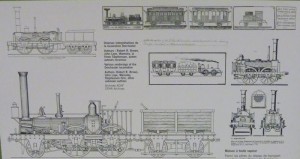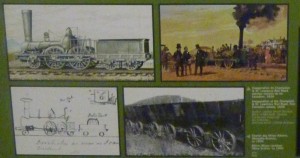Royal Canadian Mint Commemorates Canada’s First Railway!
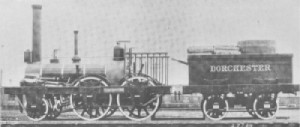 Click on
Click on 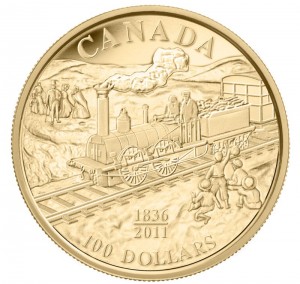
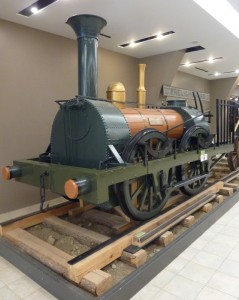 each image for a closer look!
each image for a closer look!
.
On January 5th, 2011, the Royal Canadian Mint announced its first series of gold coins. Here is their announcement of one of these coins …..
.
“2011 $100 GOLD COIN – 175TH ANNIVERSARY OF CANADA’S FIRST RAILWAY
The first of many public railroads which would eventually link Canadians from coast to coast saw the light of day when the Dorchester locomotive engine entered service in 1836 on the new Champlain and St. Lawrence Rail Road. This technological leap forward, linking the St. Lawrence Valley with Lake Champlain and shortened travel between Montreal and New York City, was the brainchild of ambitious Montreal entrepreneurs led by famous brewer John Molson. The railroad’s first engine, the Dorchester, graces the Mint’s newest 14-Karat $100 gold coin and honours one of Canada’s most influential industries.
.
The Mint’s talented engravers carefully adapted a painting of the Dorchester by late Canadian artist J.D. Kelly (1862-1958) to the reverse design of this coin, which is limited to a mintage of 3,000 and retails for $639.95 CDN.”
.
Exporail, Canada’s National Railway Museum, features the Dorchester as you enter their main museum building as shown image at the upper right. In the images below we see a collection of drawings and paintings of this first train as displayed on a plaque at Exporail.
.
Exporail’s plaque says:
.
“On July 1st, 1836, after many years of lobbying, the Champlain and St. Lawrence Rail Road launched a British-built engine; the Dorchester finally made it onto Canadian tracks, After several failed attempts, it left Laprairie and reached Saint-Jean-sur-Richelieu in less than an hour. The Dorchester was the first engine to travel on British North America soil. It pulled passengers, freight and mail. It was even used to carry troops and supplies during the 1837-38 Rebellions. In spite of its fame, the Dorchester remains a mystery: no plans were ever found. Creative souls attempting to reconstruct it have produced models, sketches, plans and drawings. Amongst the many submitted hypotheses, which is correct?”
.
Posting by Russ Milland
.
